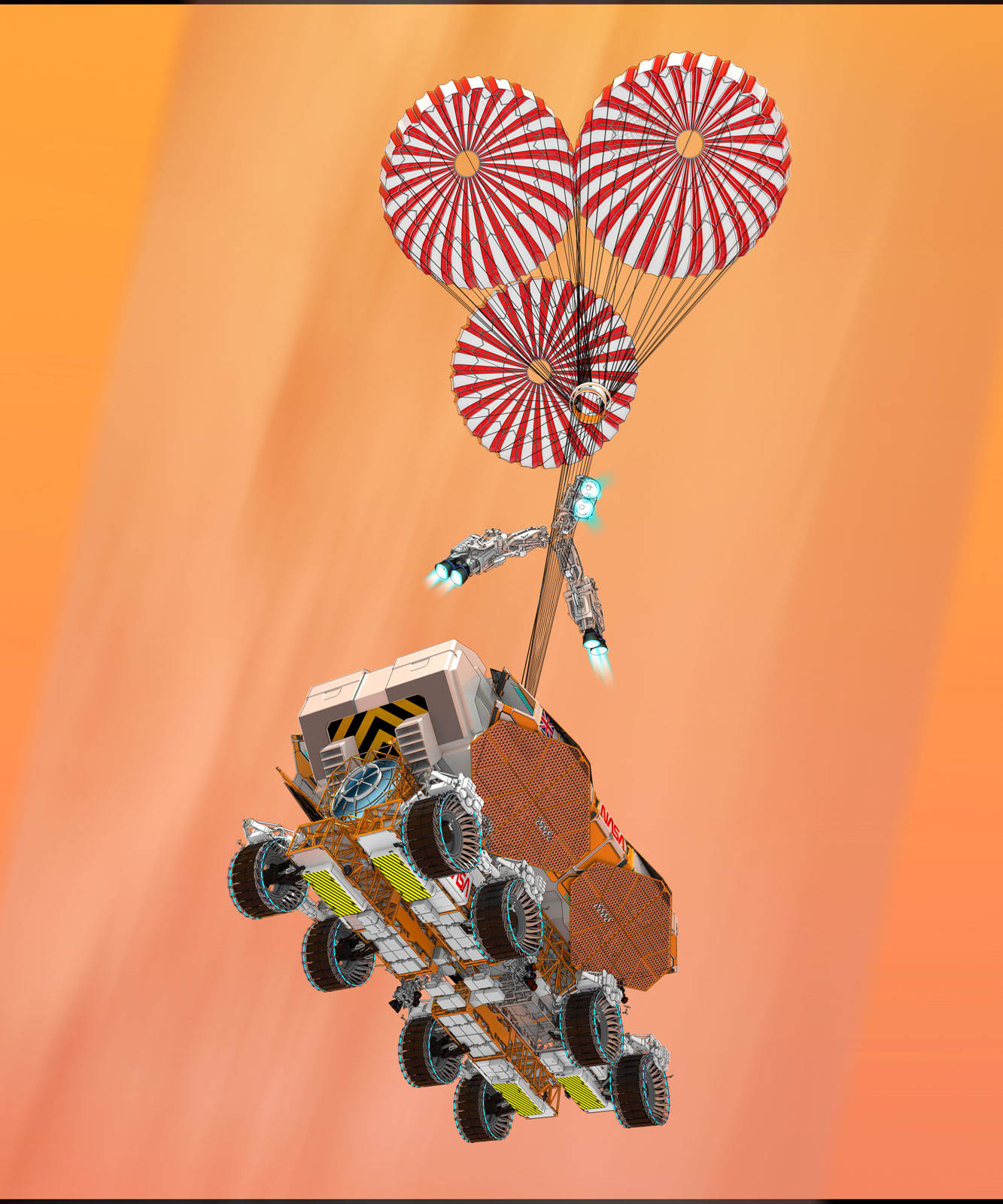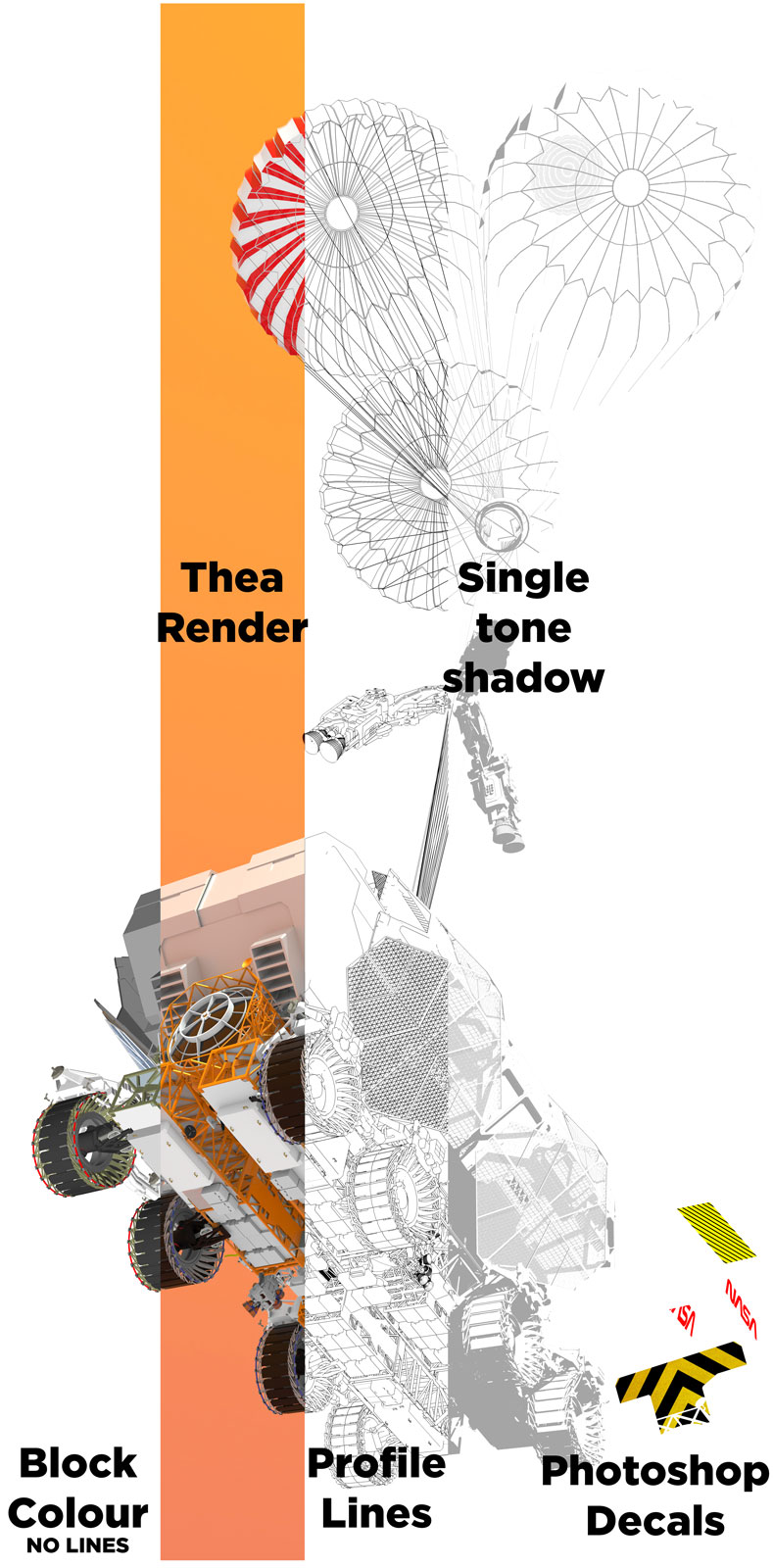MARS Habitat rover
-
First one for 2017 finished! When the rover hits the atmosphere it de-accelerates from about 7.3 km/s to 0.4 km/s (16330 mph to 900 mph) over three minutes. As it decends the parachutes open to slow it down further, and soon after the heat shield is released. The rover is then lowered to the surface and slowed further by a sky crane.
Wheels designed by Bryan Kilburn, parachute from GW.

-
Hey, those wheels look familiar.

Nice render and composition.
-
@bryan k said:
Hey, those wheels look familiar.

Nice render and composition.
Ha cheers! They have been in my library for years now, so cool!
-
excellent output. how's the sweden gig going?
-
@rich o brien said:
excellent output. how's the sweden gig going?
Cheers. Im still using the same process I always have but getting a lot quicker at it now. I just use a couple of raw outputs from SKetchup overlaid on top of a simple material render from Thea.
Sweden is good, I was in Vietnam for Christmas visiting my brother and only got back a couple of days ago, missed all the snow it seems but I am sure it will be back...

-
Cool job! Thanks for the composite breakdown! "Sky crane"?
-
@pbacot said:
Cool job! Thanks for the composite breakdown! "Sky crane"?
Here you go, SCIENCE IS CRAZY!
http://mars.nasa.gov/msl/mission/technology/insituexploration/edl/skycrane/
-
Dynamic !
-
Very effective method, if the 'chute fails there will be quite the dent in the ground though.
-
@mike amos said:
Very effective method, if the 'chute fails there will be quite the dent in the ground though.
The lower part of the rover can be released and the top half (crew section) carried to the surface under the power of the skycrane only. The lower section is just fuel for the rover and all of the science experiments. The cockpit is only used when on the surface so would not be in use when landing. I am working on a cross section at the moment so we should be able to see inside soon...!
-
Amazing work.
-
Advertisement







